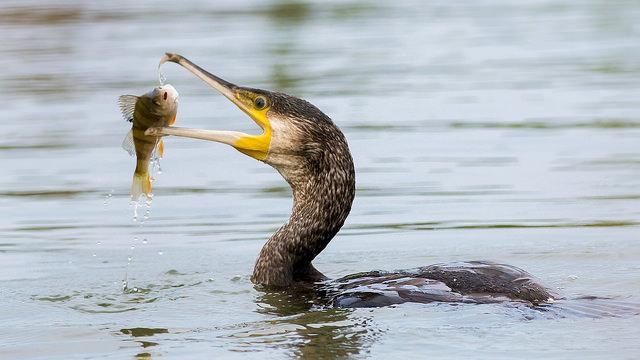Experts from the United Nations Food and Agriculture Organization (FAO) are warning nations in Central Asia, the Caucasus, the Middle East, Europe, and West Africa to watch and be prepared for a highly pathogenic H5N8 avian influenza clade detected in Russian migratory birds in early June.
In other avian flu developments, Chinese researchers who ran experiments to gauge the threat of novel highly pathogenic H7N7 avian influenza viruses to humans found that though they prefer avian airway receptors, they can bind to human ones and should be monitored closely for changes.
Past patterns could repeat in the months ahead
The Goose/Guangdong/96 H5N8 clade 2.3.4.4 virus was found during a targeted survey for avian flu and Newcastle disease viruses on the shore of Lake Ubsu-Nur in Russia's Tyva Republic, located in the southern part of the country on the border with Mongolia. The FAO credited Russia for its early reporting of the findings and said avian flu viruses detected in waterfowl at the same lake, which straddles the Russia-Mongolia border, have been linked several times in the past to virus movement along the Central Asian flyway.
The H5 clade has shown limited capacity to infect humans, with none from H5N8 and a limited number of H5N6 infections, according to the FAO.
The H5N8 clade turned up in samples from several water birds, such as black-headed gulls, grey herons, and great cormorants. Some carcasses were found, but no evidence of major die-offs was seen. The FAO said the virus may not be fatal for wild birds and might only be noticed when spillovers occur in domestic poultry, especially chickens, which are more likely to show signs of disease.
Four earlier detections of the Goose/Guangdong/96 H5 lineage at the lake involved H5N1, and die-offs noticed during those events typically occurred in May and June during waterfowl breeding season. Except for one occasion, the outbreaks were followed by detections in countries such as Bangladesh, Nepal, Bulgaria, and Romania. Movement of the virus in the flyway in 2005 was linked to the first Asian-origin H5N1 detections in Europe, the Middle East, and Africa.
Given the risk of the pattern repeating itself, the FAO said countries that border the Caspian and Black seas and also possibly Western Europe be on high alert for the virus in wild birds and poultry from September to December onwards. It urged countries to intensify passive surveillance and to raise awareness about the importance of reporting sick and dead birds, both poultry and wild species, and called for farmers to enhance biosecurity measures.
Researchers: H7N7 changes bear watching
The study on novel highly pathogenic H7N7 viruses was done by Chinese researchers, who reported their findings yesterday in an early online edition of Virology. The team looked at six H7N7 virus isolated from live poultry markets during routine surveillance from 2010 to 2013.
H7N7 viruses have been widely detected in wild birds and poultry, which can occasionally pass them to humans. This occurred in 2003 when dozens of cullers who were part of the response to a massive H7N7 outbreak in the Netherlands were infected.
Sequencing of the virus revealed that they were reassortants containing genes from H3N8, H7N3, H7N7, and H10N7 from wild bird and ducks, and that they fell into A, B, and C genotypes.
The team experimentally infected mice with H7N7 to assess receptor binding and virulence, using H5N6 virus and human H1N1 influenza as controls. They found that all six H7N7 viruses bound to both human and avian airway receptors and that the genotype B and C viruses could replicate in mouse airways without prior adaptation. C genotype viruses replicated in two of three mice tested.
Researchers concluded that it's important to continue monitoring the evolution of H7N7 viruses to gauge their pandemic potential.
See also:
Sep FAO Empres Watch report
Sep 20 Virology abstract




















